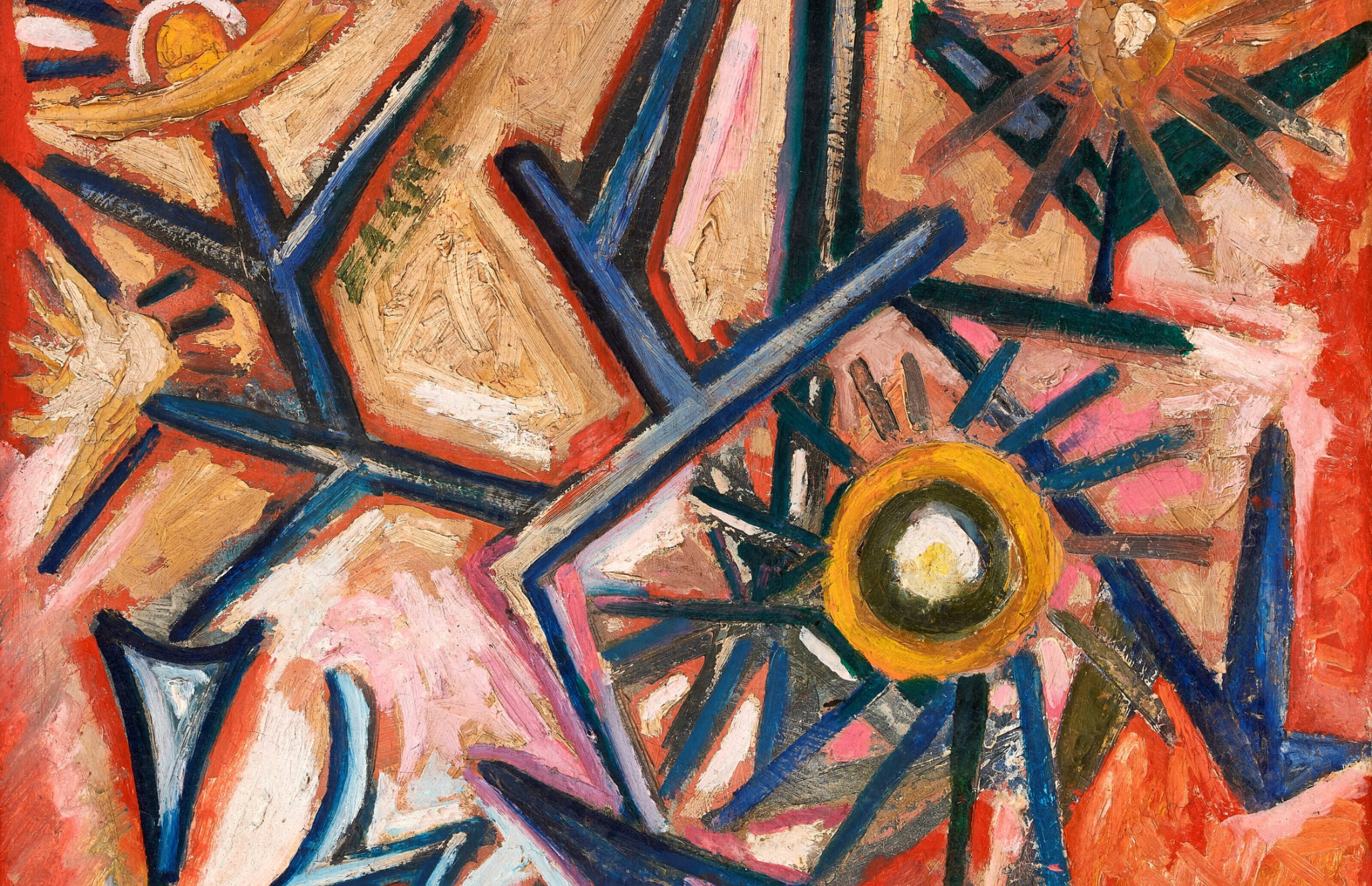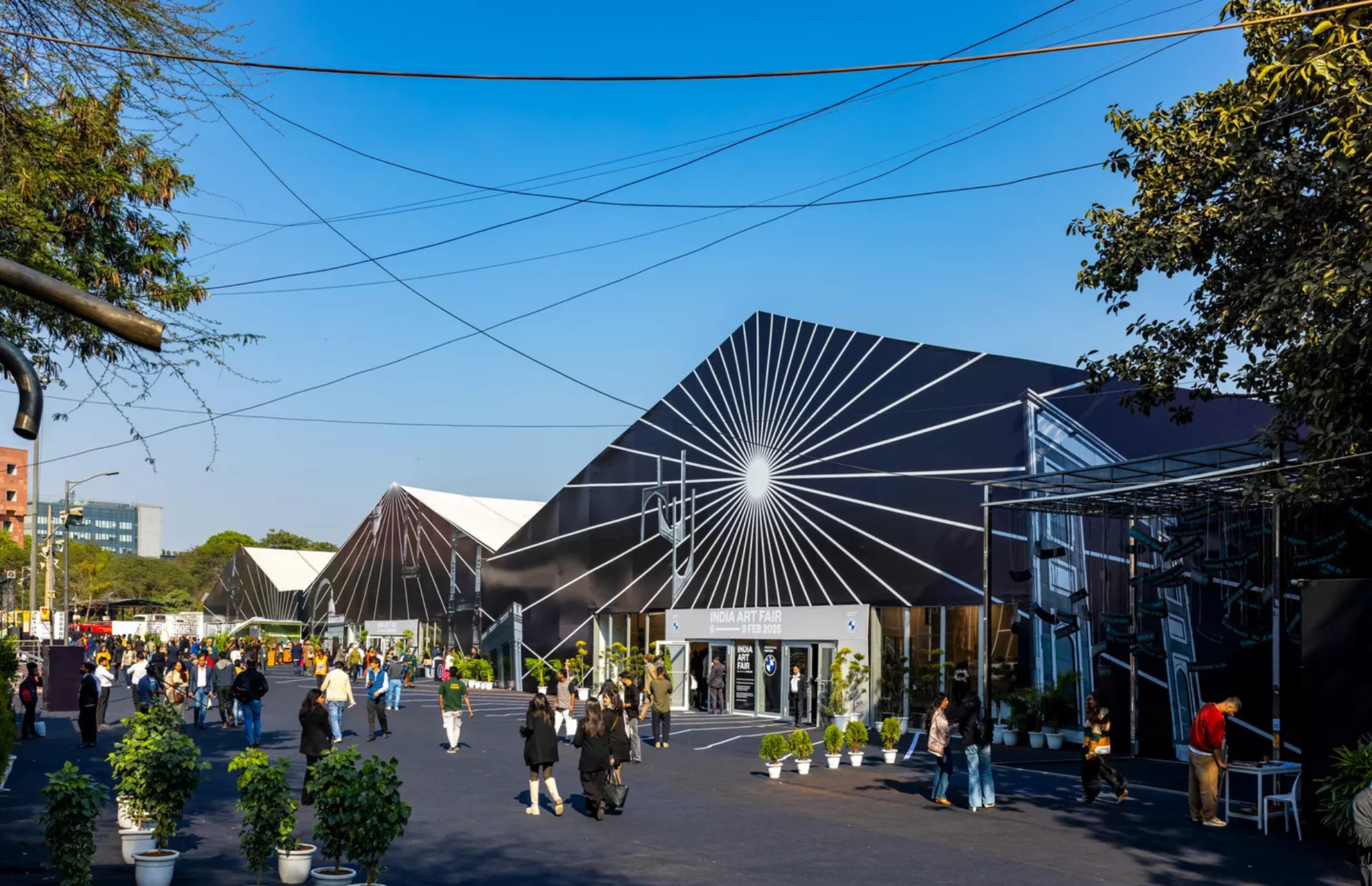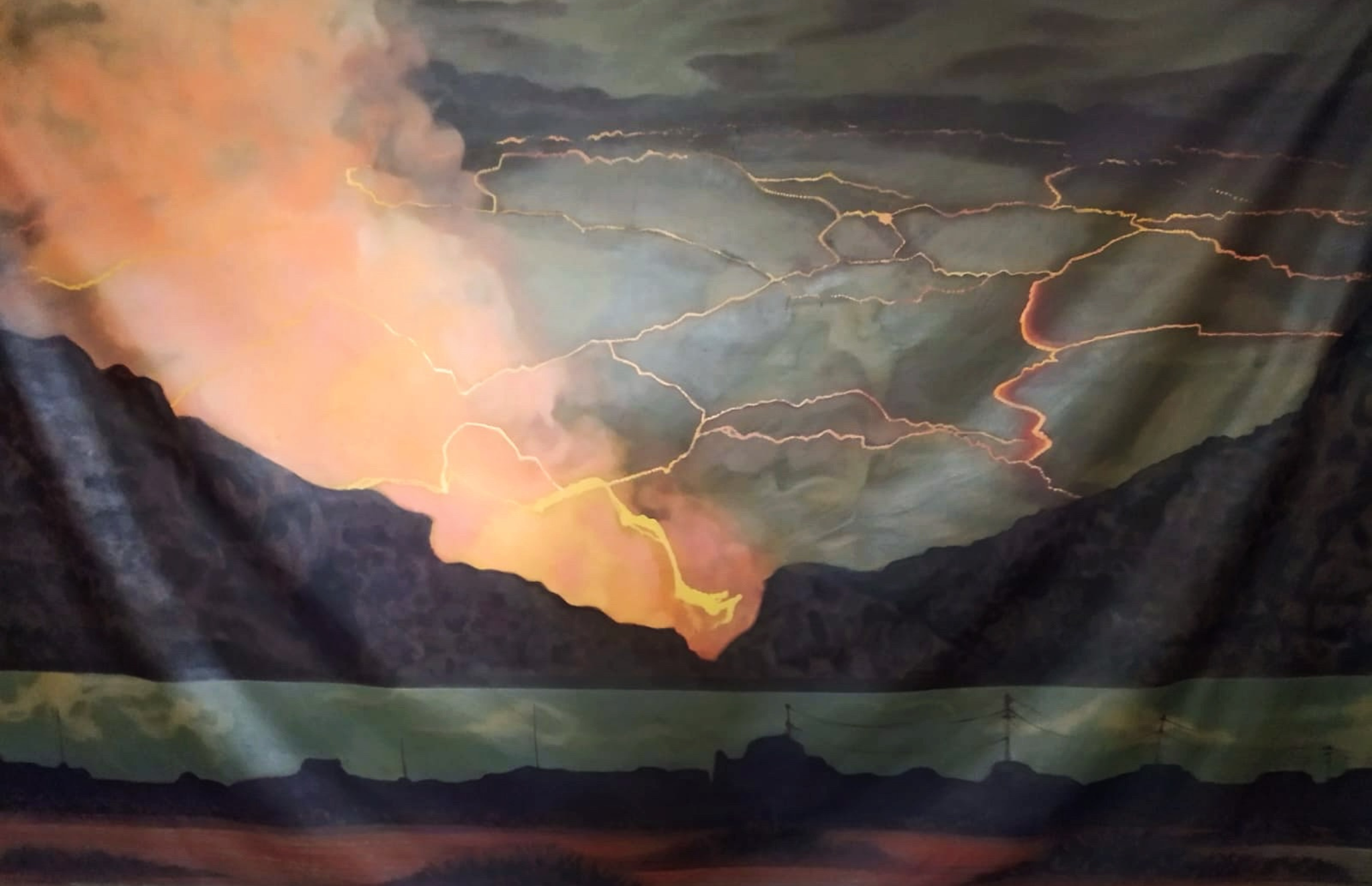Pushing the Thresholds: Exploring NMACC’s Liminal Gaps
Nita Mukesh Ambani Cultural Centre (NMACC) celebrated its first anniversary by unveiling ‘Liminal Gaps’. Derived from the Latin term ‘Limen,’ meaning threshold, the exhibition aimed to push its envelope by showcasing works exclusively from Indian artists and art groups. Curated by TRIADIC’s Mafalda Millies Kahane and Roya Sachs with executive production by Elizabeth Edelman Sachs, the show brought together a captivating lineup of India artists and art houses, Ayesha Singh, Raqs Media Collective, Asim Waqif, and Afrah Shafiq. On display from 31st March to 9th June 2024, this iteration aims to explore a dynamic and broadening horizon of India’s culture and identity.
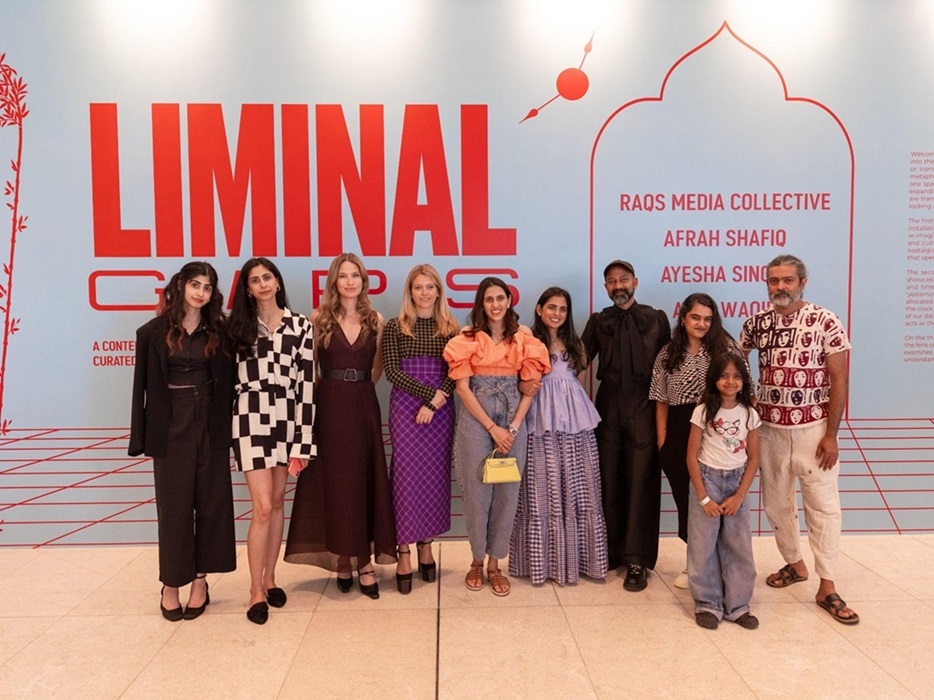
Image Courtesy: NMACC
These thresholds are opened for an array of interpretations by the audience, ranging from tangible, intangible or allegorical, inviting its audience to perceive and reflect the known in different light. The Art House, a dedicated visual art space, is exhibiting across all four floors – showcasing a cross-generational collective of artists rendering their ideas of transitory gaps in architecture, time, space, nature, and technology. With its site-specific installations, interactive sonic experiences and video games, Liminal Gaps indulges its viewers in an interactive and riveting rendition.
The exhibition also introduced movement-based interventions by Nairobian performance artist, Brendan Fernandes. Born into a Goan family based in Kenya, Fernandes’s works incorporate a multidisciplinary approach, examining issues like queer subjectivity, cultural displacement, migration, collective agency and labour. The artist interprets ‘Liminal Gaps’ by investigating the ‘space in between’, utilising the installations to move eight performers through the floors of the Art House.
The first floor of the Art House is dedicated to Delhi-based artist, Ayesha Singh. This is one of her largest commissioned works. Singh tries to investigate how architecture is implanted and leaves an indelible imprint in nation-building exercises. It delves into power relations, political intricacies and the formation of identity and behaviour, emanating from architecture. Hybrid Drawings (2024), a three-dimensional drawing, challenges the rules of architecture by re-visualising India’s skyline. Taking inspiration from her lived experience in Delhi, Singh employs it as a canvas of identities and cultures, utilising her sculptures to portray past, present, and future as displaced in transient pieces that unfolded and flattened for its viewers.
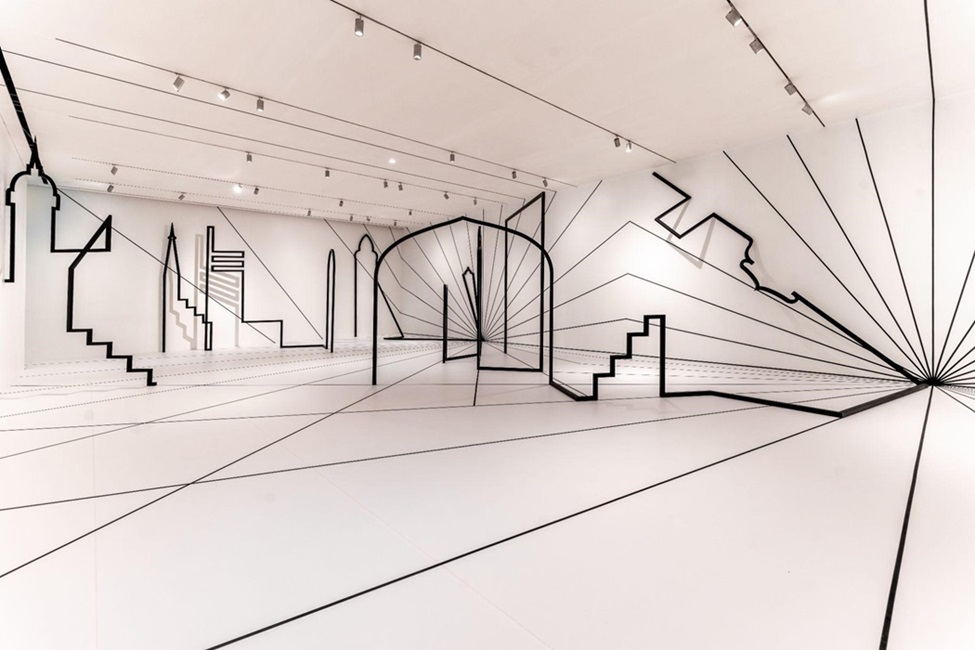
Image Courtesy: Art House, Nita Mukesh Ambani Cultural Centre
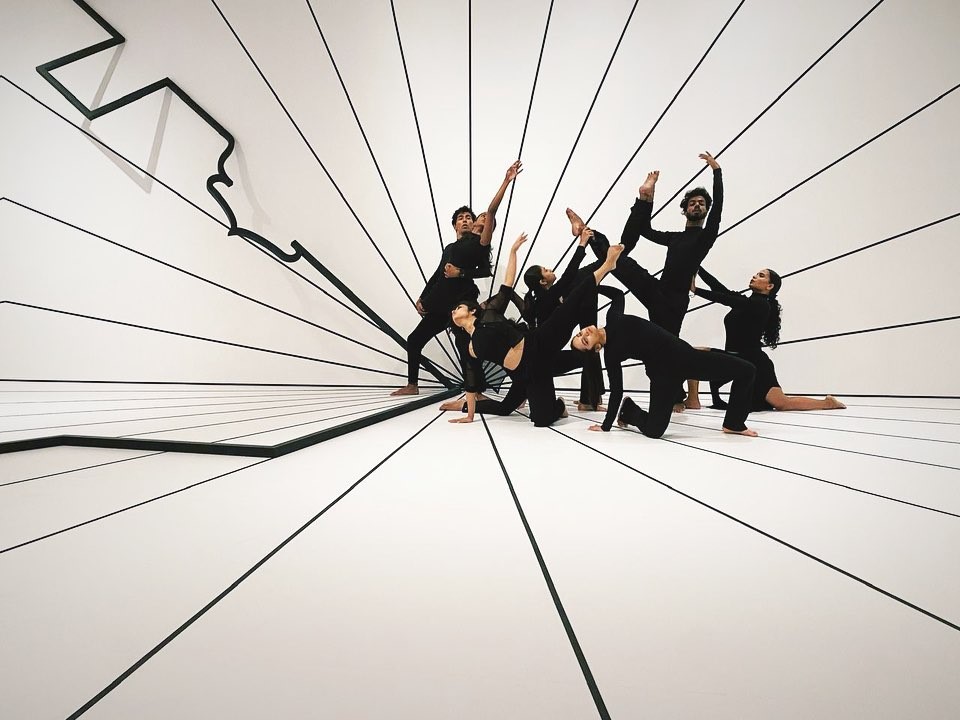
Image Courtesy: Art House, Nita Mukesh Ambani Cultural Centre
Raqs Media Collective manifests a temporal universe on the second floor of the Art house. The trinity of multimedia artists have collaborated since 1992, presenting five works meditating on the human experience of temporality. Escapement, the primary work, incorporates a collection of 27 almost similar clocks. The hands are set to the corresponding time zones, and each is assigned to a city—real or imagined. The clock faces change to portray emotions instead of hours, emphasising the mechanical routine of our lives. The installation builds through staircases with the work Nerves (2018), acting as a bridge between one artist’s space to another.
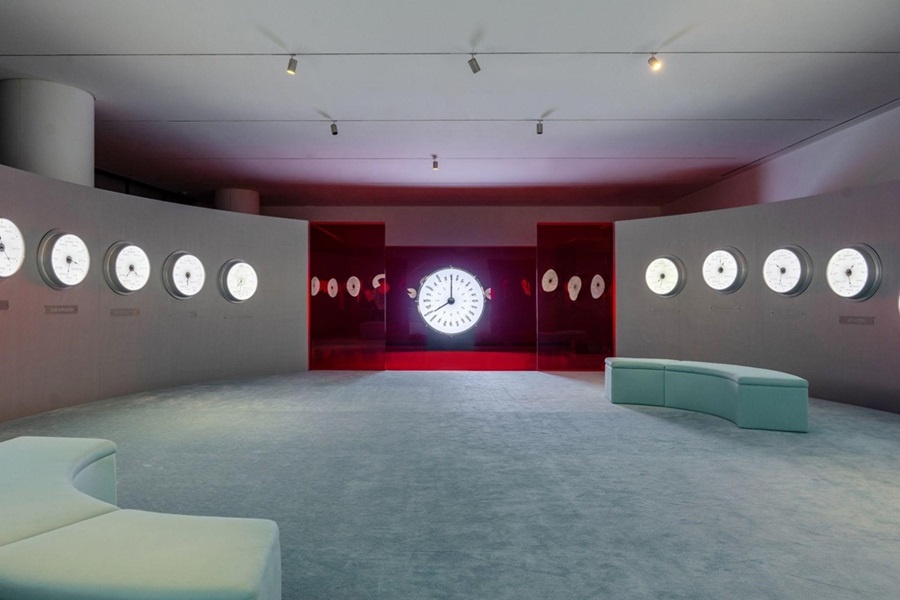
Image Courtesy: Art House, Nita Mukesh Ambani Cultural Centre
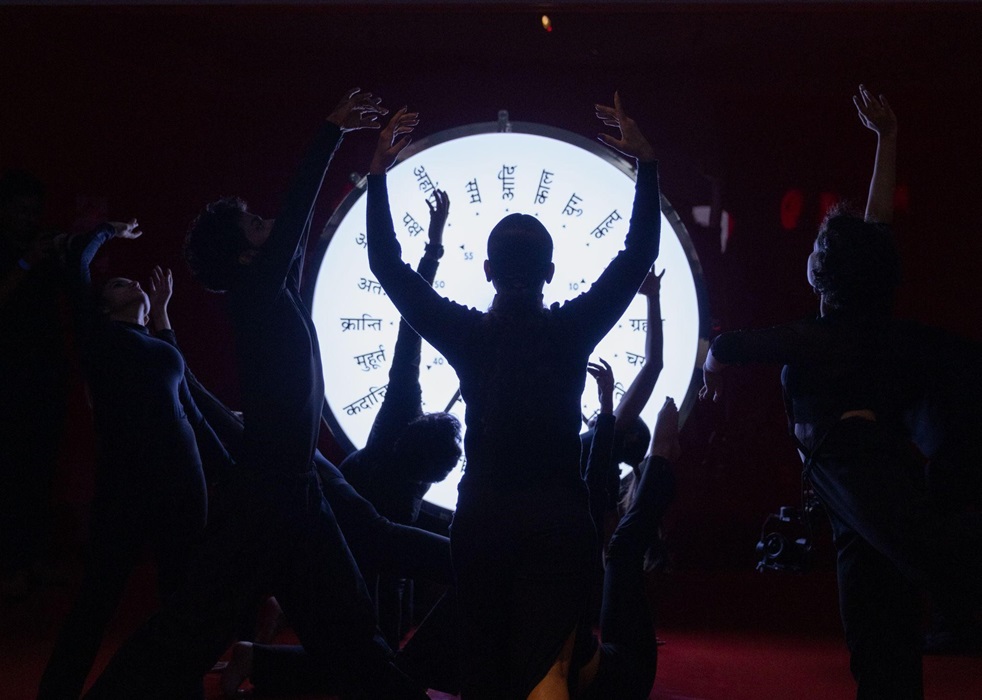
Image Courtesy: Art House, Nita Mukesh Ambani Cultural Centre
Asim Waqif, on the third floor, takes its audience to experience liminality through contemporary urban design. Chaal, an organic and metamorphic approach employed by Asam Waqif, examines the ideas of ecology and anthropology through a labour-intensive handwoven bamboo installation. Chaal presents a harmony of nature, showcasing Indian craftsmanship to its viewers.
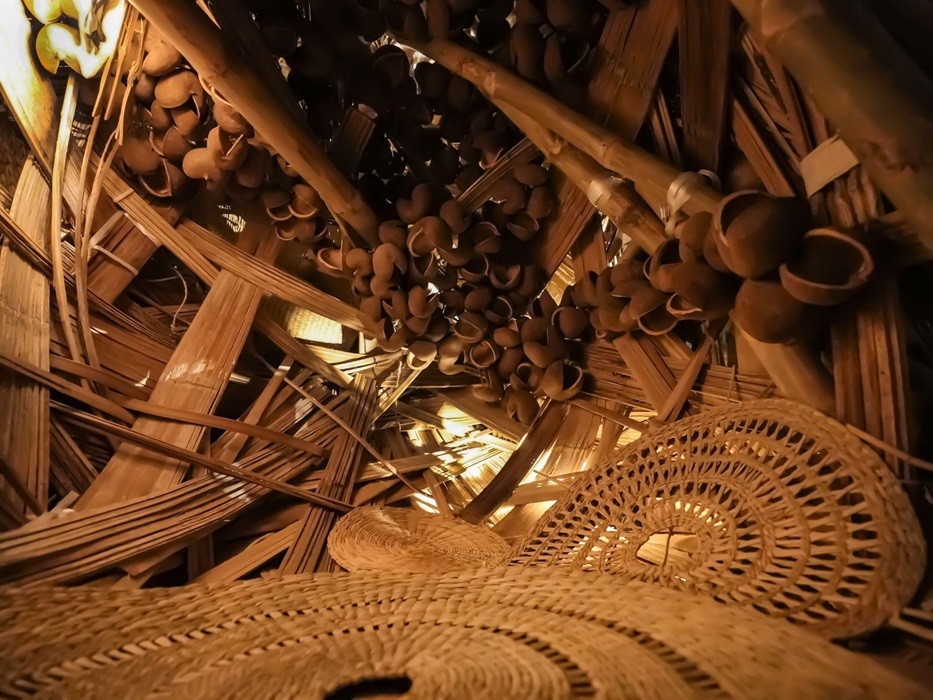
Image Courtesy: Art House, Nita Mukesh Ambani Cultural Centre
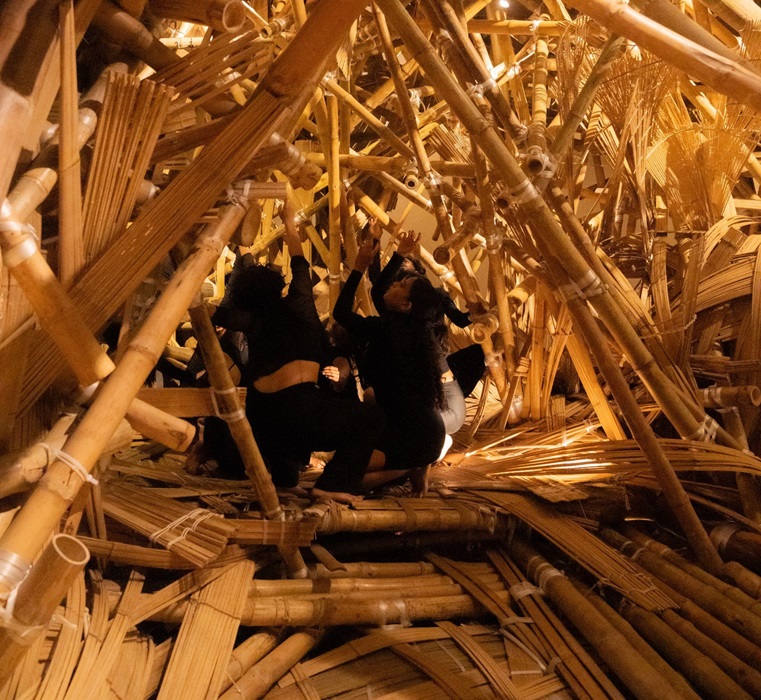
Image Courtesy: Art House, Nita Mukesh Ambani Cultural Centre
Sultana’s Reality (2017), is an interactive, multimedia experience presented on the fourth floor by Goa-based artist Afrah Shafiq. It delves into the relationship between women and the colonial education movement in India, employing archival sources, history and written records of women. . The presentation draws inspiration for its title from a utopian science-fiction short story, written in 1905 by Begum Rokeya Sakhawat Hossein. The work focuses on the first generation of educated women in pre-independence India. The installation is inspired in an Alice in Wonderland style adventure, ensuring an immersive digital flux video game experience for the audience.
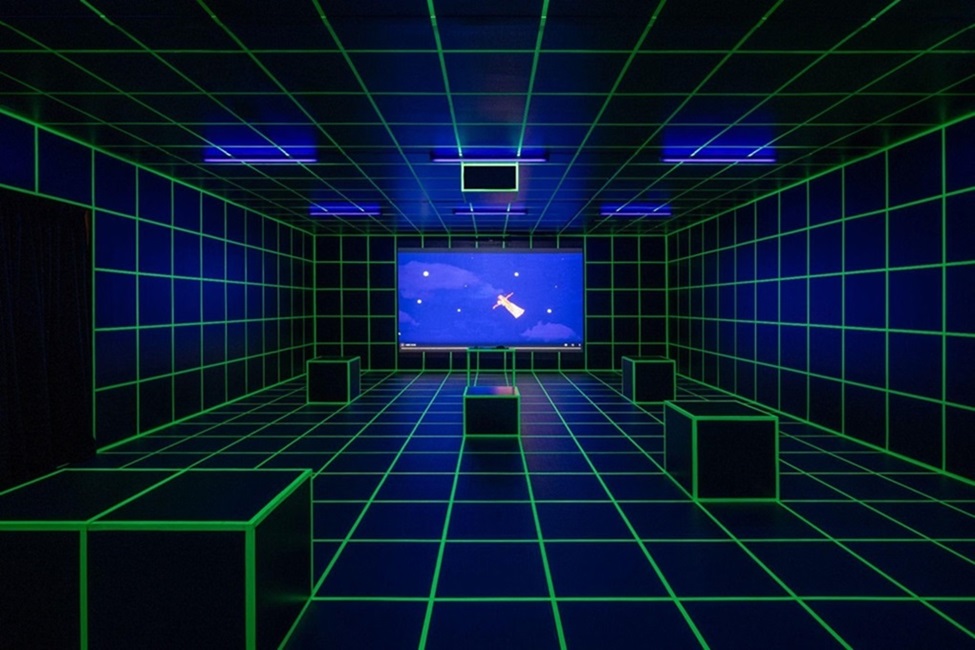
Image Courtesy: Art House, Nita Mukesh Ambani Cultural Centre
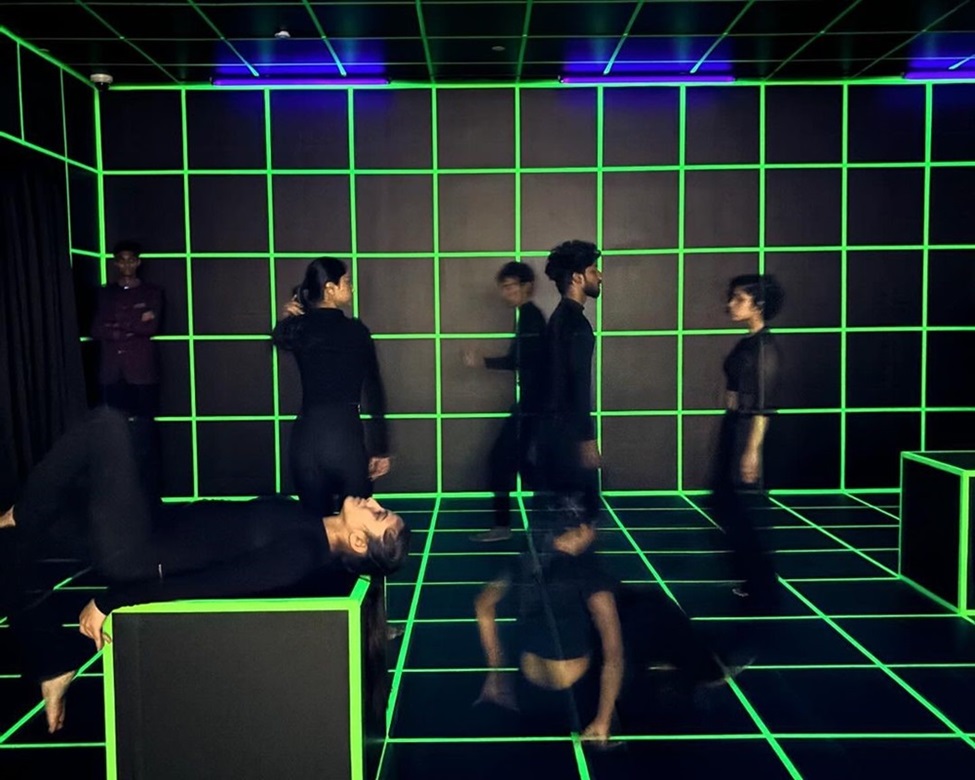
Image Courtesy: Art House, Nita Mukesh Ambani Cultural Centre
Text by Shalini Passi
Image Courtesy: Art House, Nita Mukesh Ambani Cultural Centre
Find more about the Liminal Gaps:


